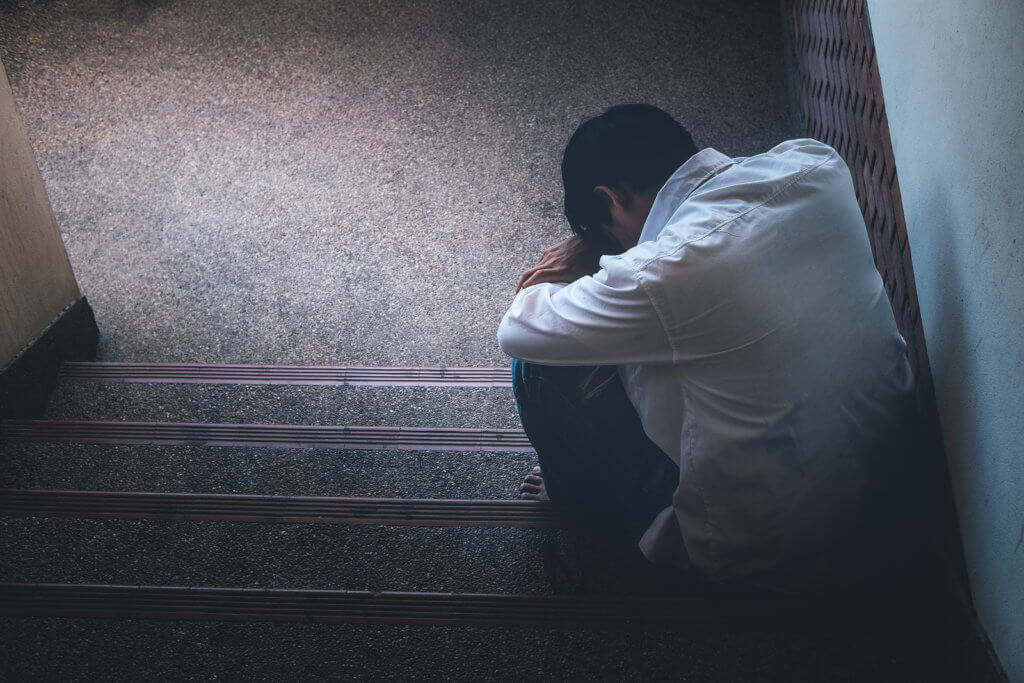
Body dysmorphic disorder (BDD) is a pathological disorder that is characterized by a fixation with one’s personal appearance, or at least one aspect of it. A person who experiences BDD focuses on real or imagined physical flaws or unusual features to the point of obsession and this preoccupation interferes with his or her ability to function normally.
As a result of obsessive thoughts and behaviors, people with BDD are at heightened risk of experiencing co-occurring mental health conditions such as depression, anxiety, and substance use disorders.
Characteristics of Body Dysmorphic Disorder
Body dysmorphic disorder is classified as a somatoform disorder, which is “a group of psychological disorders in which a patient experiences physical symptoms that are inconsistent with or cannot be fully explained by any underlying general medical or neurologic condition.”
Body dysmorphic disorder shares features of anxiety disorder, including intrusive negative thoughts, avoidance of social situations, unfounded fear, and emotional distress. The obsessive nature of BDD is also similar to characteristics of obsessive-compulsive disorder (OCD).
BDD is not to be confused with mild self-consciousness or superficial vanity. People with BDD often have difficulty forming and maintaining relationships, holding down jobs, and interacting socially because of significant anxiety over their appearance. Many of the physical features that people obsess over, however, are distorted only in their minds and reflect an inner fear instead of reality.

The diagnostic criteria for BDD include:
A fixation on a real or imagined defect in one’s appearance, and one which is usually not perceived by others. If the imperfection is real, the person’s obsession with it is blown out of proportion. People with BDD often target imagined defects on their skin, especially the face, but any aspect of the body can become the focus of an obsession.
Emotional distress and functional impairment. Specifically, the disorder must significantly impact relationships, career, school, social activities, or other important aspects of life.
Self-image or body-image distortion isn’t a symptom of another psychiatric condition, such as anorexia, bulimia, or obsessive-compulsive disorder. However, people with BDD do often have at least one other mental health issue, such as depression, post-traumatic stress disorder, generalized anxiety, social phobia, or substance use disorder.
Signs and Symptoms
The following are signs that may indicate that you or someone close to you has body dysmorphic disorder:
- Spending an excessive amount of time looking in the mirror, picking at skin, obsessing over hair, or examining one’s face or body from multiple angles.
- Displaying a compulsion to check one’s reflection in mirrors, windows, or other reflective surfaces.
- Continually fixating on a defect in one’s appearance that others can’t see or would consider unimportant.
- Going out of the way to conceal the flaw, such as applying heavy makeup, or wearing sunglasses or over-sized clothes.
- Spending a large amount of money on makeup, creams, hair products or other items related to correct the flaw but cannot achieve satisfaction with results.
- Undergoing plastic surgery or dermatological procedures in an attempt to fix imperfections.
- Dieting or exercising excessively to minimize the presumably flawed areas of one’s body.
- Experiencing problems at school or work due to tardiness or poor performance related to body-obsessive behaviors.
- Isolating from friends, family, or social events due to relentless self-consciousness over an appearance problem.
- Suffering from depression, anxiety, or panic over perceived physical flaws.
- Erroneous beliefs of being ridiculed by others because of minor imperfections in one’s appearance.
- Using drugs or alcohol to relieve anxiety and obsessive thinking related to BDD.
The impact of body dysmorphic disorder on one’s life can be nothing short of devastating. People who suffer from BDD may spend several hours every day thinking about the defects in their appearance. Their distorted beliefs can intensify to the point of social phobia, agoraphobia, or paranoia if they become so preoccupied that they can no longer interact socially.
Obsessive behaviors can force people with this condition to accept jobs below their abilities because they can’t concentrate on sufficiently challenging work, of which they are capable. As a result, they may also experience financial distress, instability, and unemployment.
BDD and Substance Use Disorders

The isolation, depression, stress, and humiliation associated with body dysmorphic disorder makes affected persons more vulnerable to substance abuse. For example, a study in the Journal of Clinical Psychiatry followed 176 subjects who met the criteria for BDD. Of this group, they found the following:
- Nearly one-half (49%) had suffered from a substance abuse problem, and more than one-third (36%) had experienced chemical dependence at some point during their lifetime.
- More than 9% were currently abusing drugs or alcohol, and nearly 10%
were currently dependent on drugs or alcohol. - Among the majority of subjects, the symptoms of BDD started at least one year before the onset of substance abuse.
- Subjects who experienced co-occurring substance abuse and BDD were more likely to suffer from delusional symptoms.
Alcohol and marijuana are two of the most commonly abused substances among people who suffer from BDD. Both substances are central nervous system (CNS) depressants, which can relieve the anxiety related to the disorder. People who diet or excessively exercise in connection with the disorder may also abuse stimulants such as amphetamines, meth, or cocaine to suppress their appetite and speed up metabolism.
In the beginning, drugs and alcohol may seem to help calm obsessive thoughts, but substance abuse will eventually exacerbate the symptoms of BDD. Moreover, alcohol and drug dependence increase the functional impairments that make BDD so challenging in the first place.
Treatment for BDD and Substance Use Disorders
Like substance abuse, body dysmorphic disorder is linked to denial and secrecy. People with both conditions tend to hide them from family, friends, employers, and others. Also, the delusional symptoms of BDD are stubborn, and
it may take months or even years of intensive therapy to overcome them.
Therapeutic modalities that have been proven effective for the treatment of BDD and substance abuse include the following:
Cognitive Behavior Therapy (CBT)

Cognitive Behavior Therapy (CBT) has been employed successfully in the treatment of mood, anxiety, and eating disorders, as well as alcohol and drug dependence. This therapeutic approach is based on the identification and modification of negative thought patterns so that the patient can experience a happier and more fulfilling life.
With time and patience, CBT can result in positive outcomes for people who experience the intrusive thoughts that are characteristic of body dysmorphic disorder. CBT is also used to teach coping skills and prevent relapse in patients who suffer from chemical dependence.
Antidepressant Therapy
SSRIs (selective serotonin reuptake inhibitors) are antidepressants prescribed to mitigate the symptoms of a number of serious psychiatric conditions, including depression, social anxiety disorder, and obsessive-compulsive disorder, among others. These medications, which help replenish a healthy balance of serotonin, have also been associated with positive outcomes in the treatment of BDD.
Research that appeared in the Archives of General Psychiatry revealed that fluoxetine, or Prozac, a frequently prescribed SSRI, improved symptoms in more than half (53%) of patients with BDD. A similar study that was published in the Journal of Clinical Psychiatry suggested that citalopram (Celexa) improved social functioning and quality of life in 40% of studied subjects with BDD.
Treatment for Co-occurring Disorders
When a person experiences BDD in addition to a substance use disorder, both conditions must be treated simultaneously to facilitate a complete recovery. For this reason, integrated addiction rehab programs for co-occurring disorders employ clinicians and professionals who are trained in both addiction treatment and mental health care.
Behavioral therapy, medication management, group counseling, and family therapy are also delivered at the same facility, allowing for clear communication and collaboration among members of the treatment team. This collaborative, supportive environment provides a safe, secure setting for recovery to take place.
Our center provides specialized, customized care for people suffering from both chemical dependence and a substance use disorder. Contact us as soon as possible to learn more about our recovery services, and start the healing process today.